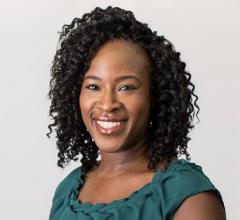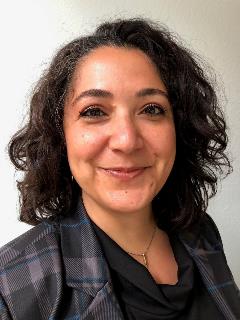By the CSA Women in Anesthesia Committee
In recognition of the many major accomplishments by women in anesthesia, CSA will be highlighting a variety of women leaders who practice throughout the state, bringing their diverse backgrounds and life perspectives into their work, taking purposeful steps to create pathways for mentorship and sponsorship, and helping support the clinical and research work that is being driven by an increasingly diverse field of anesthesiologists.
Below are two profiles on women making great things happen in anesthesia:
Odi Ehie, MD
- Assistant Clinical Professor, University of California, San Francisco
- Vice Chair, Diversity, Equity, and Inclusion, UCSF
- Chair, CSA Committee on Justice, Equity, Diversity, and Inclusion
- Site Co-Director, Health Volunteer Overseas/Society of Education in Anesthesia (SEA-HVO)
Can you describe the importance of pipeline programs?
Pipeline programs can help foster the next generation of women healthcare providers and women leaders by helping to increase exposure to the medical field and show younger audiences what is possible. Creating connections into high schools, colleges, and medical schools helps to nurture future healthcare providers, recruit individuals, increase interest in STEM, and create opportunities to shadow medical providers. This firsthand exposure is essential to increasing interest among a diverse pool of potential healthcare workers. My first exposure to the field of anesthesiology was during a two-week mandatory anesthesia rotation at the University of Wisconsin-Madison School of Medicine; I wasn’t aware of anesthesia previously but once I saw the way anesthesia combined my interests in pharmacology and chemistry in the service of patient care, I was convinced it was the right path for me.
Can you describe your work in diversity, equity, and inclusion?
Through my work with the “Differences Matter” initiative at UCSF, I have found a forum to talk about how unconscious bias and allyship play an important role in healthcare. In order to address unconscious bias there must be action at an institutional level to implement training and tackle the challenge with intention. We need an environment where healthcare leaders are analyzing their assumptions, questioning their decisions on leadership, and are purposely aware of their own unconscious bias. The power is in knowing your unconscious bias so that you can be intentional in your actions to make our environment more equitable, particularly in the leadership space where women are under-represented.
The importance of diversifying leadership
The representation of women within medical school is fairly equitable, but there is a major gap as you look ahead to healthcare leadership roles. It’s incredibly important for administration and practice leaders to be intentional in reaching equitable representation of women in leadership roles, and not settle for just seeing women in lower-level medical roles. With equitable representation in leadership comes equitable representation in perspectives and insights. This is good for patient care and is beneficial for building and maintaining strong healthcare practices as well as strong healthy communities.
Solmaz Nabipour, MD
- Clinical Associate Professor, Anesthesiology, Perioperative and Pain Medicine, Stanford Hospital and Clinics, Lucile Packard Children’s Hospital
- Anesthesiology Medical Director at Stanford Cancer Center South Bay
- Co-Founder/Director of ASPIRE Program
- Currently in law school at Santa Clara University
Describe your work in promoting equity and diversity in medicine?
In my early career experience, I saw that women and underrepresented minorities had more difficulty spontaneously finding mentors, and had more difficulty building the same type of career support network that I saw others benefiting from. People tend to pick a mentee that they have something in common with, and unfortunately, we tend to see the superficial stuff first. That means that mentor/mentee benefits tend to flow to the younger doctors that look the same and have the same background as those who are already in power. None of this is intentional, it’s just how we behave as humans. I grew up in Tehran and came to the U.S. when I was 7 years old and didn’t speak English. There were not a lot of other physicians around me with the same life experiences or easily visible connections.
I think we need to be purposeful in pushing faculty development projects that help everyone and increase access to those mentorship benefits. To do this, I helped start the Early Career Mentorship Program at Stanford University. This program provides a structured approach to mentorship, giving guidance to mentors, and holding relevant workshops on topics related to career development, research assistance, and improving ourselves as educators. We also have a speaker exchange program called “ASPIRE” which provides a forum for idea exchange and community building for newer anesthesiologists across both private practice and academic settings.
What are some of the unique challenges for women in medicine?
We like to network with other people like ourselves, so women network with other women and minorities network with other minorities, but unfortunately that means that right now we’re not networking with as many of the people who are in leadership positions and who can get us into positions of power and leadership. There’s an important saying: “You can’t be what you can’t see,” so I think it’s very important that we build up diversity and representation in leadership so that women and minority doctors see the leadership opportunities exist for them as well. And that matters in the long term for the delivery of quality patient care. Diversity in medicine is a really good thing. People who are cared for by doctors who look like themselves tend to be more comfortable, satisfied, and even get better care.
What needs to change?
We all need to recognize that we carry historical assumptions of what a leader looks like, so we need to try hard to check those judgments. To build a more diverse leadership tier in medicine, we need to judge potential leaders on whether they are doing the right things and showing the right skills, not on whether they say things the same way as past leaders. At the same time, we also need to restructure our American idea of what a good doctor is. For so long, we’ve only looked at career opportunities in medicine through the lens of full-time employees with little to no personal time – but if we shift our perspective and nurture a culture of increased flexibility, that will not only create more diverse leaders, but will also build a more resilient physician workforce.
